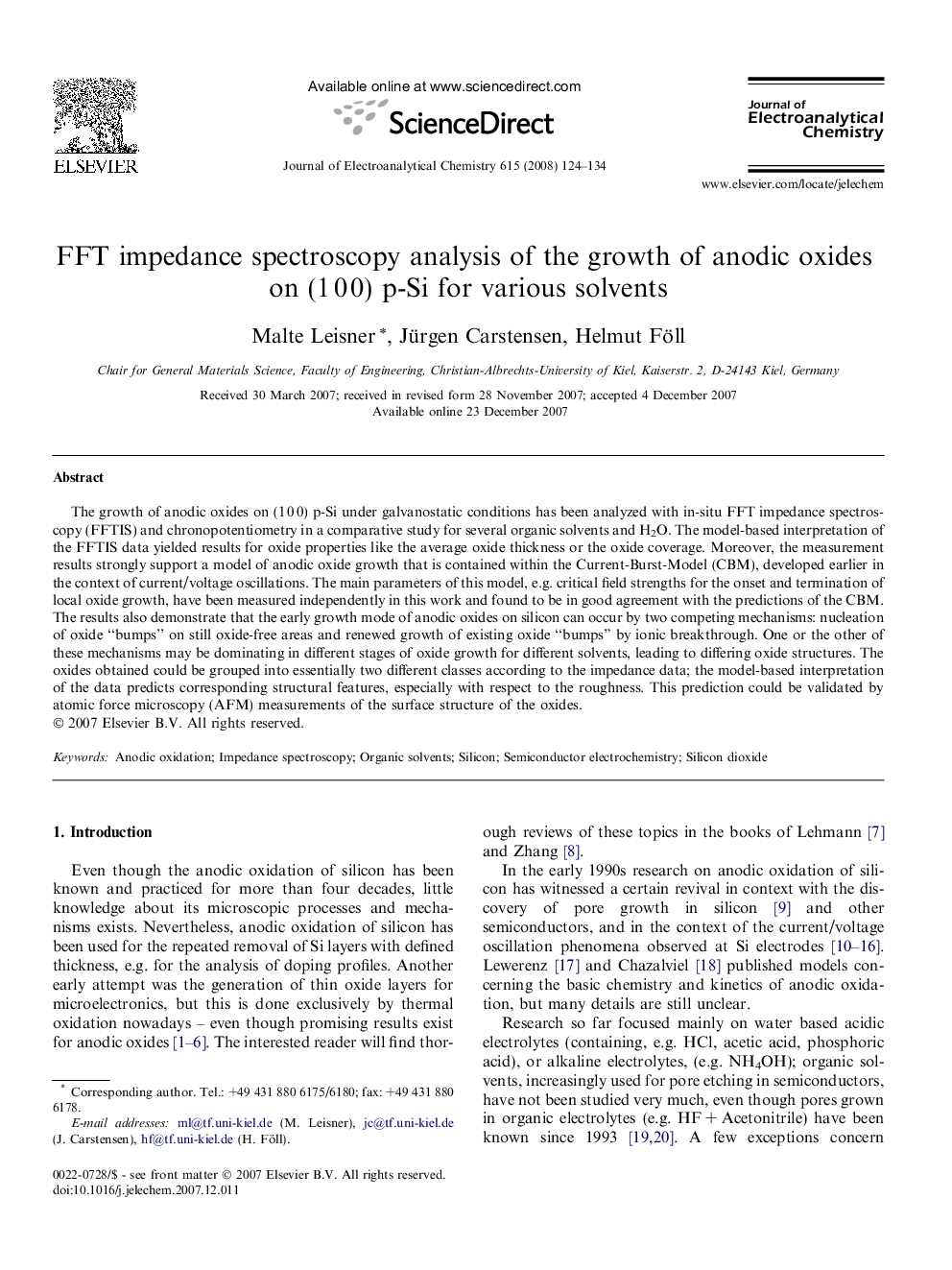| Article ID | Journal | Published Year | Pages | File Type |
|---|---|---|---|---|
| 220727 | Journal of Electroanalytical Chemistry | 2008 | 11 Pages |
The growth of anodic oxides on (1 0 0) p-Si under galvanostatic conditions has been analyzed with in-situ FFT impedance spectroscopy (FFTIS) and chronopotentiometry in a comparative study for several organic solvents and H2O. The model-based interpretation of the FFTIS data yielded results for oxide properties like the average oxide thickness or the oxide coverage. Moreover, the measurement results strongly support a model of anodic oxide growth that is contained within the Current-Burst-Model (CBM), developed earlier in the context of current/voltage oscillations. The main parameters of this model, e.g. critical field strengths for the onset and termination of local oxide growth, have been measured independently in this work and found to be in good agreement with the predictions of the CBM. The results also demonstrate that the early growth mode of anodic oxides on silicon can occur by two competing mechanisms: nucleation of oxide ‘‘bumps’’ on still oxide-free areas and renewed growth of existing oxide “bumps” by ionic breakthrough. One or the other of these mechanisms may be dominating in different stages of oxide growth for different solvents, leading to differing oxide structures. The oxides obtained could be grouped into essentially two different classes according to the impedance data; the model-based interpretation of the data predicts corresponding structural features, especially with respect to the roughness. This prediction could be validated by atomic force microscopy (AFM) measurements of the surface structure of the oxides.
